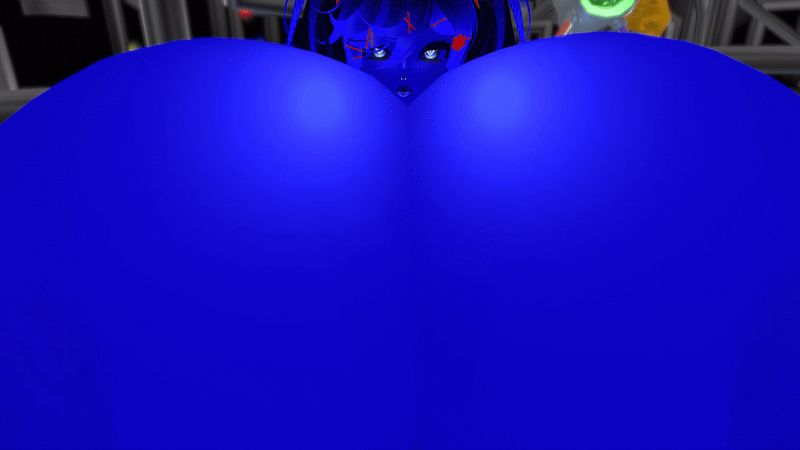HOME | DD
 FarGetaNik — Transneptunian Objects - Size comparison
by-nc-sa
FarGetaNik — Transneptunian Objects - Size comparison
by-nc-sa

#ceres #charon #color #comparison #enceladus #eris #horizons #iapetus #mimas #nasa #object #orcus #pluto #quaoar #salacia #scale #sedna #size #tno #varda #varuna #vesta #kbo #makemake #transneptunian #haumea #new #kuiperbelt #dwarfplanet
Published: 2016-05-28 09:08:48 +0000 UTC; Views: 14078; Favourites: 42; Downloads: 61
Redirect to original
Description
This picture shows the largest TNO (over 600 km in diameter) in correct relative size, albedo and color. I also included the transneptunian moons that fall in that category, but no smaller ones. We can expect that some or most of these objects are in hydrostaic equlibrium and hence can be called "dwarf planets". The IAU so far refuses to announce any additional ones, but maybe some recent discoveries can change this mood: 2007 OR10 seems to be larger than the two dwarf planets Makemake and Haumea. Estimating whether an object is in hydrostatic equilibrium or not is extremely difficult if only the diameter is known (for many of these obejects, not even that). For that purpose I put some comparison objects in the graphic. The upper limit for "not in equilibrium" seems to be somewhere between 390 km (Mimas) and 1400 km (Iapetus), bu the lower limit of "equilibrium" is somewhere at 500 km (Enceladus). What? Just WHY Iapetus?! You were my favourite moon You see the problem...This picture took me some work and research, I tried to use the best fit for the most recent data. Converting the color information into the actual color was another big challange. I'm not 100% sure if it is realistic, some objects appear almost neutral in color (like Makemake, which is supposed to be slightly red). For astetic reasons I replaced the blobs with actual images if avaliable.
Related content
Comments: 31

👍: 0 ⏩: 0

👍: 0 ⏩: 0

👍: 0 ⏩: 0

👍: 0 ⏩: 0

This is a very helpful and impressive work. Thanks very much. It is also, I believe, still pretty much up to date (as of 6/18). 2007 OR10 has been shown to be pretty conclusively where you've placed it as 3rd largest after Kepler and Herschel data have shown it be both darker and larger than most thought. I really appreciate your effort and research in such a dynamic field!
👍: 0 ⏩: 1

Thanks! Nice to have people appreciate my work. I was quite carefull on how to represent the data, as some sources tend to blatently overexaggerate certain parameters like size, even though we know by now most TNO aren't that charcoal black lumps we believed a decade ago. I made this illustration after we found out some key parameters like the true size of 2007 OR10, that's why it aged well.
👍: 0 ⏩: 0

this image got me imagining Sedna looking a lot like Ceres for some reason, just more red. i love diagrams like this = )
👍: 0 ⏩: 1

Great 
👍: 0 ⏩: 1

yeah idk still about Sedna, its so mysterious.. all of them are lol. (we need to explore more then just the Pluto system out there) or at least it looks a lot more like the cratered areas on Pluto with ice in the craters but very crusty kinda frosty.
👍: 0 ⏩: 1

There are still so many more worlds out there to explore! Unfortunately it takes so long to get there and nothing planned right now.
👍: 0 ⏩: 1

yeah sadly eh. i still say we have not discovered the deepest canyon or tallest mountain in our solar system yet. we know so little about the deep kipper belt and moons of both ice giants and dwarf planets. Might be a 30 Km deep canyon rip in the crust of Orcus, but we wont know until 2098 when we actually explore it for the first time. or something lol
👍: 0 ⏩: 1

I like this idea. Pluto and Charon blew my mind, they didn't really resemble any other world. There might still be many alien worlds out there, and they will for sure break one or another record! But dammit, I can't wait for it.
At least NASA now decided to visit 8 new asteroids in the forseeable future, that's at least someting. I'm particulary hyped for Patroclus and Psyche 
👍: 0 ⏩: 1

yes!! the 8 new asteroids really made me happy when i herd about that. and for sure those two i am looking forward to the most too. but im sure the others will give us plenty more surprises too hopefully. hopefully the 8 new asteroids will satisfy our taste for new discovery, at least for a little bit
👍: 0 ⏩: 1

Yes I'm confident abaut that 
👍: 0 ⏩: 2

also I'm guessing that the colors of these TNO's are also in your PCR (Project Celestia Rework).
👍: 0 ⏩: 0

for sure!! i love you mars, but you aren't the only interesting target out there!
👍: 0 ⏩: 1

Right! They should first explore the worlds we know little about and then they can revisit Mars for intense study. This is just frustrating. But well, 2 new interesting pioneer missions to look forward to
👍: 0 ⏩: 1

Beautiful! Love the lineup. Pluto might be "only" a dwarf planet, but it's not alone!
👍: 0 ⏩: 1

👍: 0 ⏩: 0

It makes sense. Iapetus is a walnut...in a way.
👍: 0 ⏩: 1

Yes, this moon has a pretty interesting geology. But still, I can't comprehend why such a huge Objekt ist not in equilibrium. That renders Haumea's and Makamake's dwarf planet status questionable.
👍: 0 ⏩: 2

👍: 0 ⏩: 0

They don't say the object needs to be in hydrostatic equilibrium, just gravitationally rounded. The smallest body in the Solar System with hydrostatic equilibrium is Rhea. All between the size of Iapetus and Mimas, besides Proteus, are rounded, and all below Mimas' size are not rounded.
👍: 0 ⏩: 1

Yes they do, sadly. Well, isn't gravitationally rounded the same thing? I've done some research and yes, Rhea is officially the smallest object in h.e. but the same paper also states that Eneladus, Tethys and Dione most likely are too, whereas Mimas and Iapetus definitely not. They were in equilibrium at some point and later were disrupted out of it (much like Vesta, which doesn't count for that reason).
*Edit: I forgot Ceres, which is also confirmed to be in h.e., thus being the smallest such object
👍: 0 ⏩: 1

This makes sence. This picture helps me to compare those planets.
👍: 0 ⏩: 2

U POSTED THIS COMMENT ON MY B-DAY!!!
👍: 0 ⏩: 0

You misspelled since, the second letter is an i, not an e.
👍: 0 ⏩: 2

sorry but I messed myself up. It should be sense with an s, not a c.
👍: 0 ⏩: 0

Also these are not planets. They are TNO's.
👍: 0 ⏩: 0

























